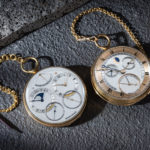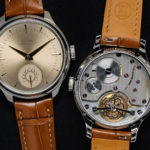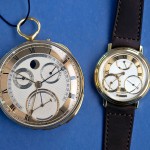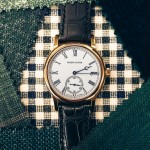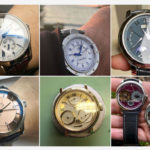Best of 2022: Independent Watchmaking
A high-volume year with just a few outstanding watches.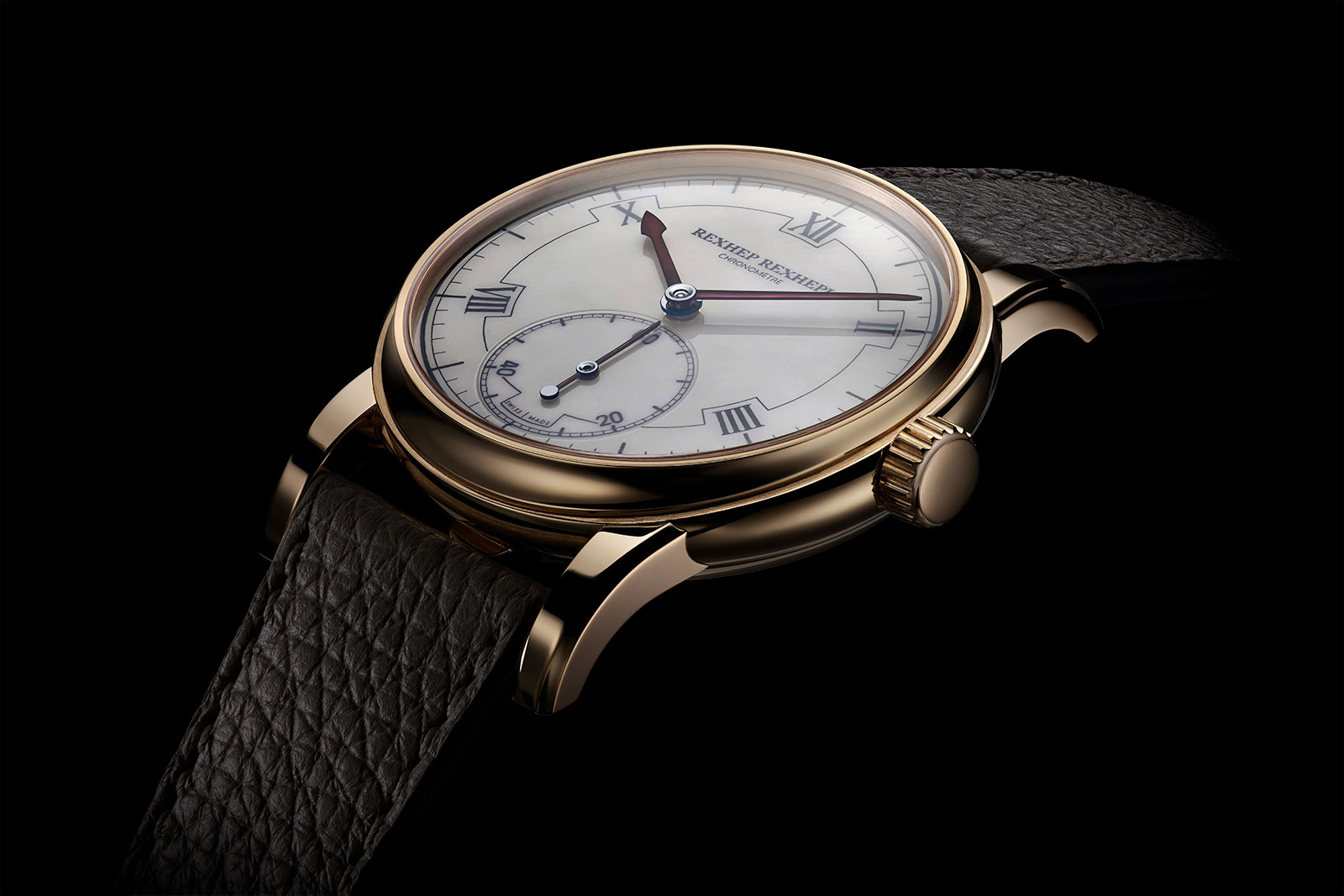
Twenty twenty-two will undoubtedly be the best year on record for the luxury-watch industry. Swiss watch exports recorded their highest ever monthly value in November 2022 and the total for the year will top CHF24 billion, another all-time record.
Despite the stellar year – or perhaps because of it – the “novelties” for 2022 are fairly muted. Lots of nice watches made their debut during the year, but the truly outstanding and significant launches were sparse. That could be for a few reasons, including supply chain disruptions due to the pandemic or that brands simply didn’t need to try too hard since sales were easy. During Watches & Wonders, a chief executive of a high-end independent brand conceded that it was better to conserve ammunition for the inevitable slowdown.

Watches & Wonders 2022, where sales were easy to come by. Image – Watches & Wonders
Even if the genuinely notable were few, the volume of new releases was consistently high throughout the year. And it wasn’t just new models from existing brands, but also new faces, especially in the independent watchmaking space. There was plenty to keep watch aficionados occupied throughout the year.
Still, the year’s top watches are pretty obvious. The very best will be remembered a decade from now as a significant or important watch. Other picks simply have soul and authenticity.
With that in mind, our team compiled the year’s best in each of the major categories, ranging from establishment favourites (like the new Royal Oak “Jumbo”) to the independents (which includes a made-in-Cambodia tourbillon). We begin here with the independents.
Naturally we have to lead with the UR-100V ‘Time and Culture’, which was designed by our founder in collaboration with Urwerk. Inspired by Aztec motifs, the Time and Culture has a micro engraving on the front plate that sits just under the crystal. It is easily one of the most striking Urwerk watches, bar none.
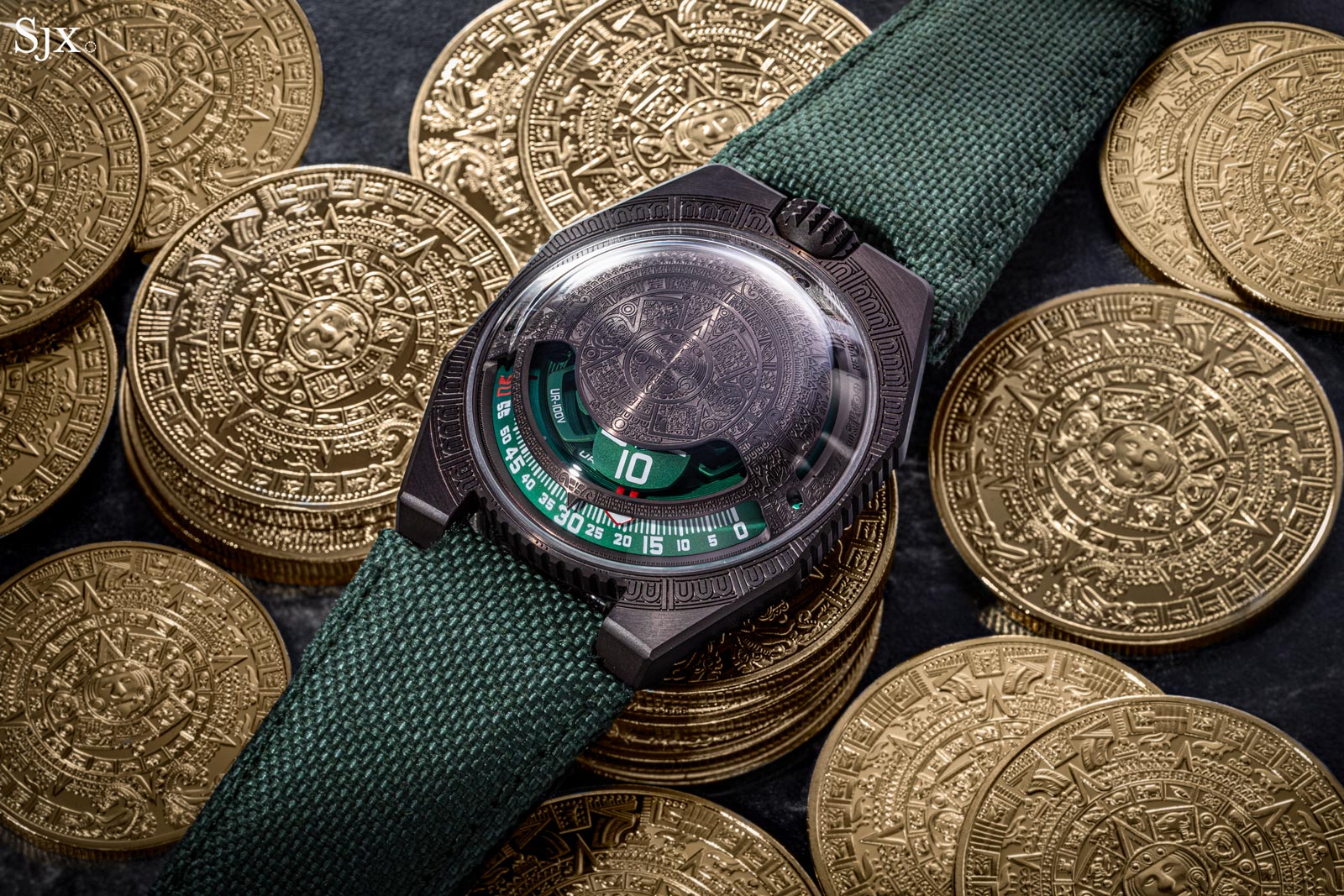
UR-100V ‘Time and Culture’
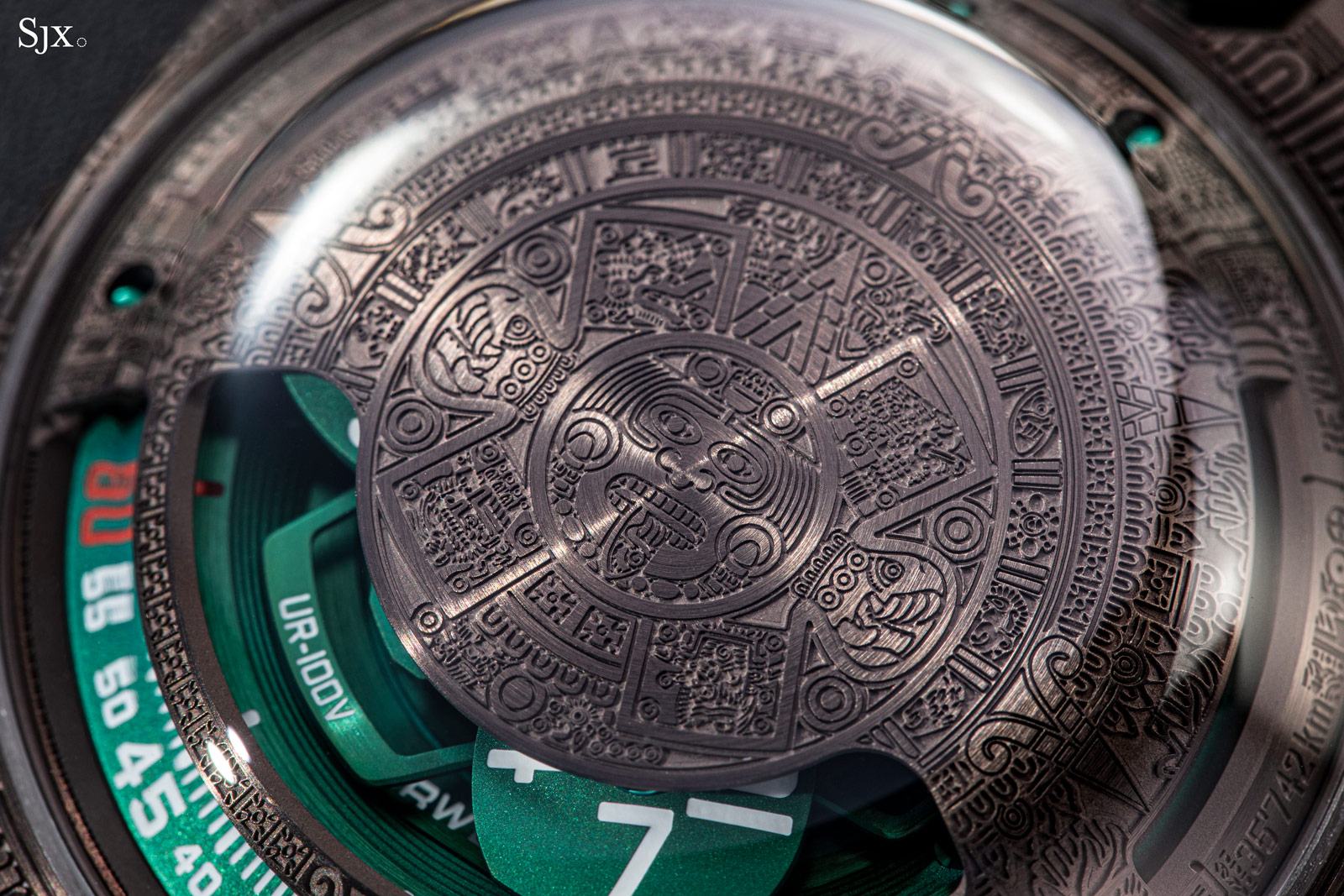
The engraving was done with a drill bit of just 0.05 mm in diameter
Rexhep Rexhepi needs no introduction. The founder of Akrivia is in his early thirties but unquestionably one of the leading independent watchmakers of the modern era. This year Akrivia released the Chronomètre Contemporain II, following the unique piece created for Only Watch last year.
While designed in the same mould as its predecessor, the Chronomètre Contemporain II (RRCCII) is an entirely new timepiece with movement developed from the ground up. Inside is the RRCC02 with a deadbeat seconds incorporating hacking and zero-hacking. Its biggest flaw is availability: the RRCCII is a limited edition of only 50 pieces and we understand the waitlist is in the thousands.
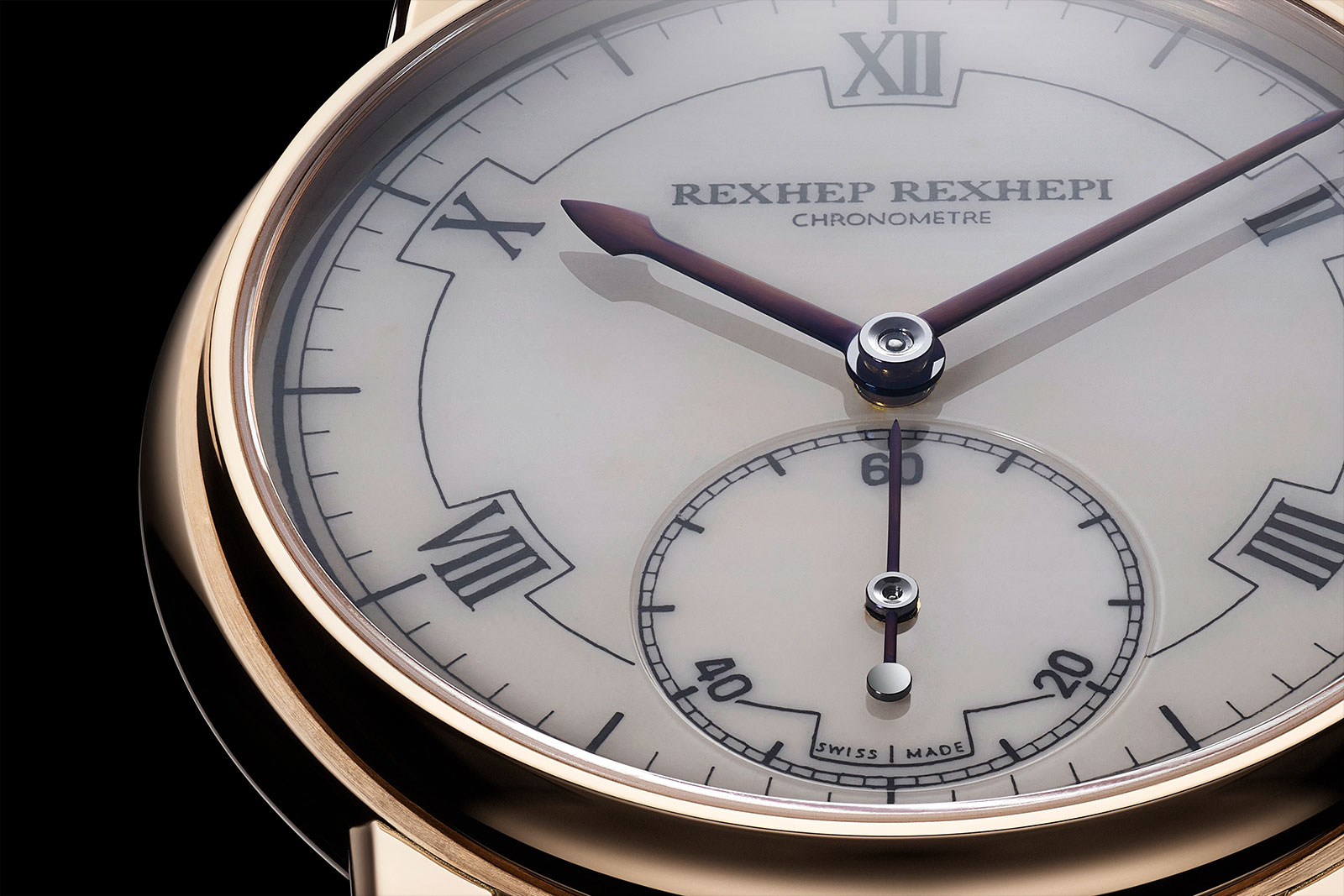
The RRCCII in rose gold. Image – Akrivia
Mr Rexhepi spent some of his formative years at F.P. Journe, indicating the stature of the latter brand. This year saw F.P. Journe bring back one of its quirky classics, the Vagabondage I.
One of the most unusual watches ever made by the brand, the original Vagabondage was a limited edition of just 69 in platinum made in 2004. The subsequent second and third iterations of the Vagabondage were available in both platinum and red gold, explaining the return of the first model.
Scaled up but visually similar, the new Vagabondage I retains the wandering jumping hour display with an exposed balance wheel in the centre of the dial. And the case is substantially larger at 42 mm and naturally the case is rose gold.
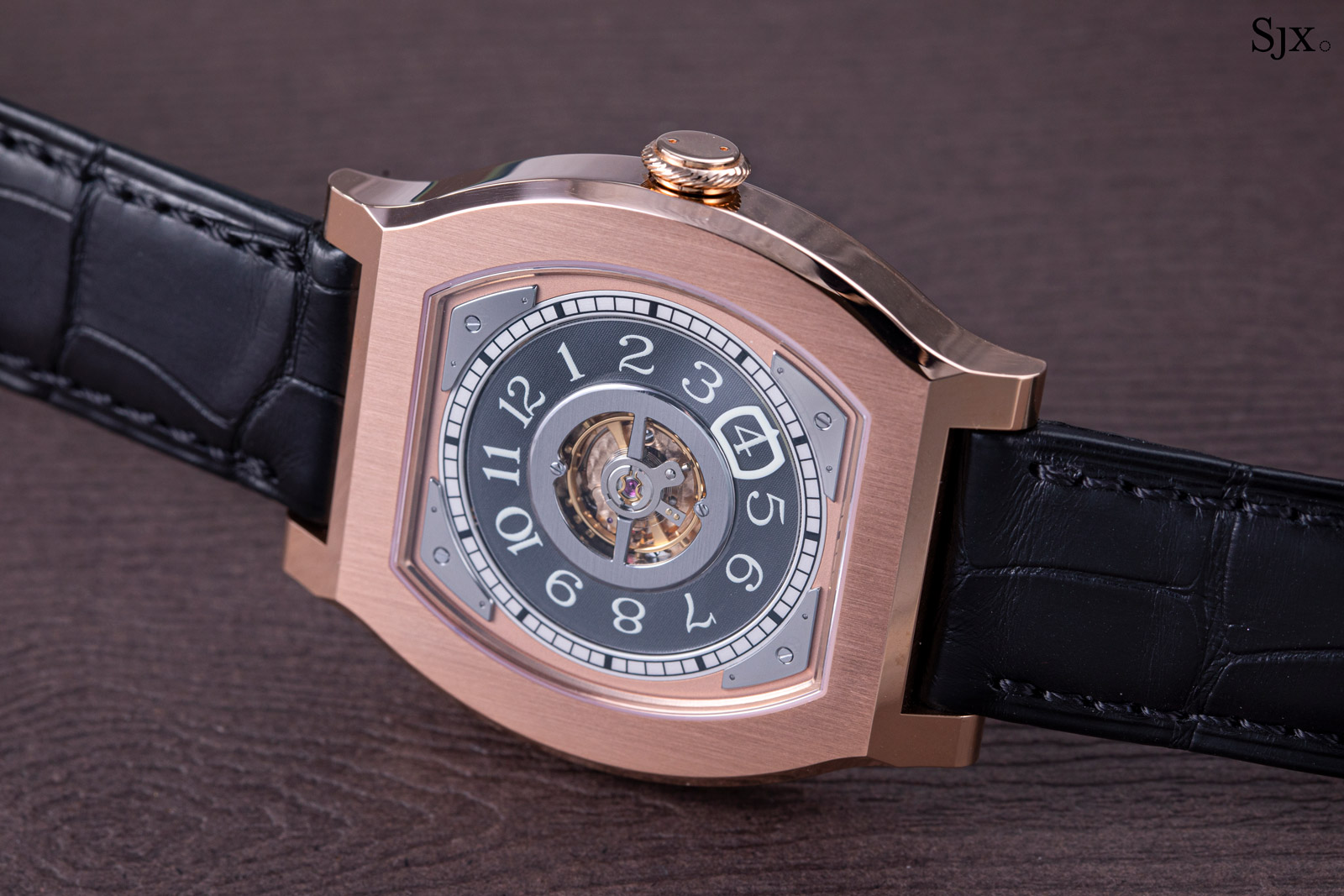
The Vagabondage I
While F.P. Journe is an establishment marque amongst the independents now, two newcomers stood out not only for their quality but the authenticity of concept and execution. One is the Sylvain Pinaud Origine. Although in his forties, Mr Pinaud only started his own brand recently but has made a name for himself with his high-quality execution.
Conceived to express simplicity in design and elaborate finishing, the Origine is uncluttered on the front but features subtle details evident only up close. Likewise on the back, the manual-wind movement, which was entirely developed and mostly made in-house, is finished perfectly. While Mr Pinaud has yet to develop a distinctive house style, he is clearly a independent watchmaker on the rise.
Reflecting a comparable level of quality but an entirely different design philosophy is the Yosuke Sekiguchi Primevère. A Japanese transplant to Switzerland who spent two decades working for movement makers, Mr Sekiguchi modelled his inaugural creation on 19th century pocket watches.
He faithfully recreates the feel of a vintage pocket watch and even relies on antiquated manual methods for some components, like cutting the German silver bridges with a saw and file. But Mr Sekiguchi takes the movement decoration to another level, applying an artisanal finish to all components. He also adds a few decorative flourishes of his own, including the black-polished winding click spring shaped like the Greek letter “Ω”.
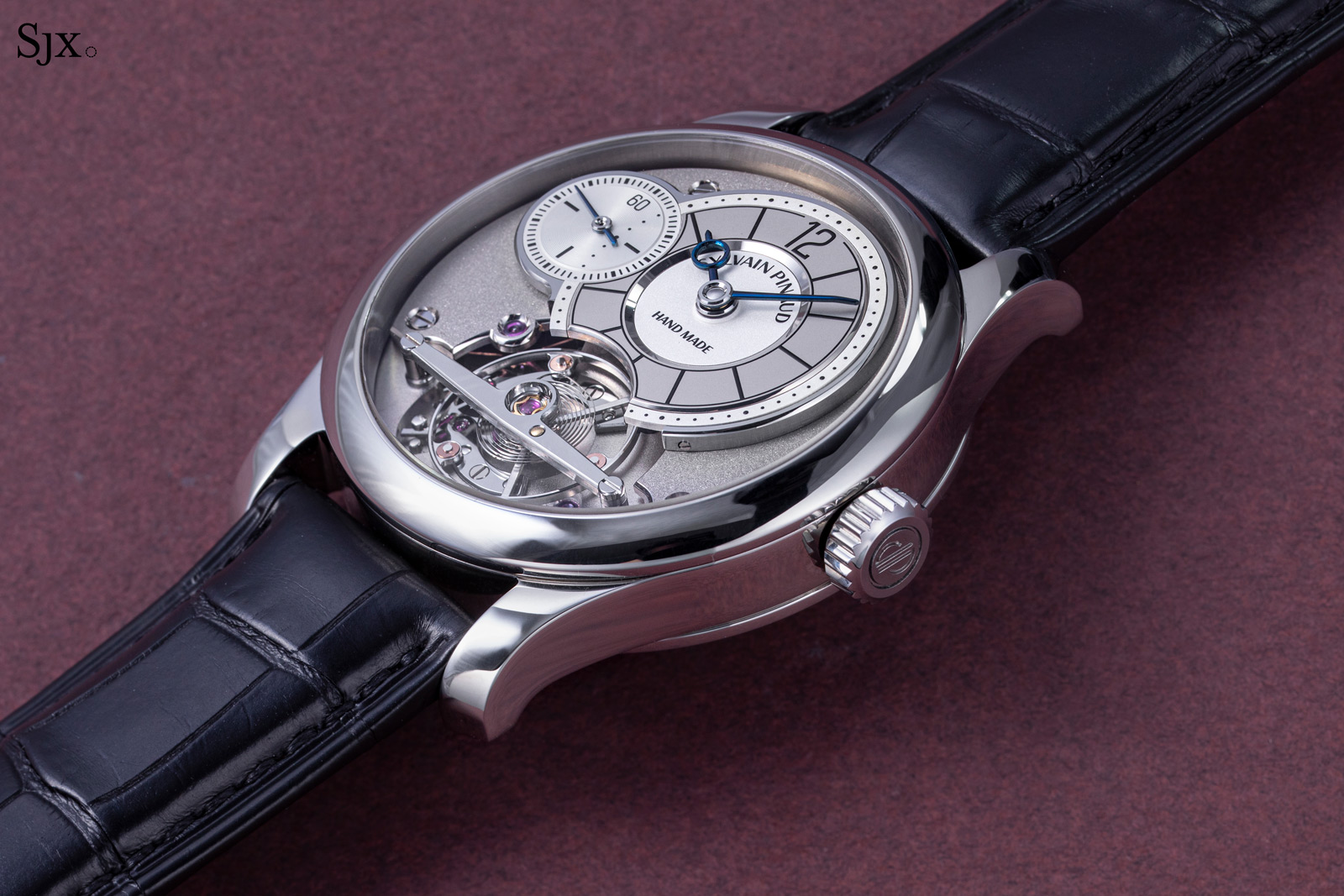
Sylvain Pinaud’s Origine
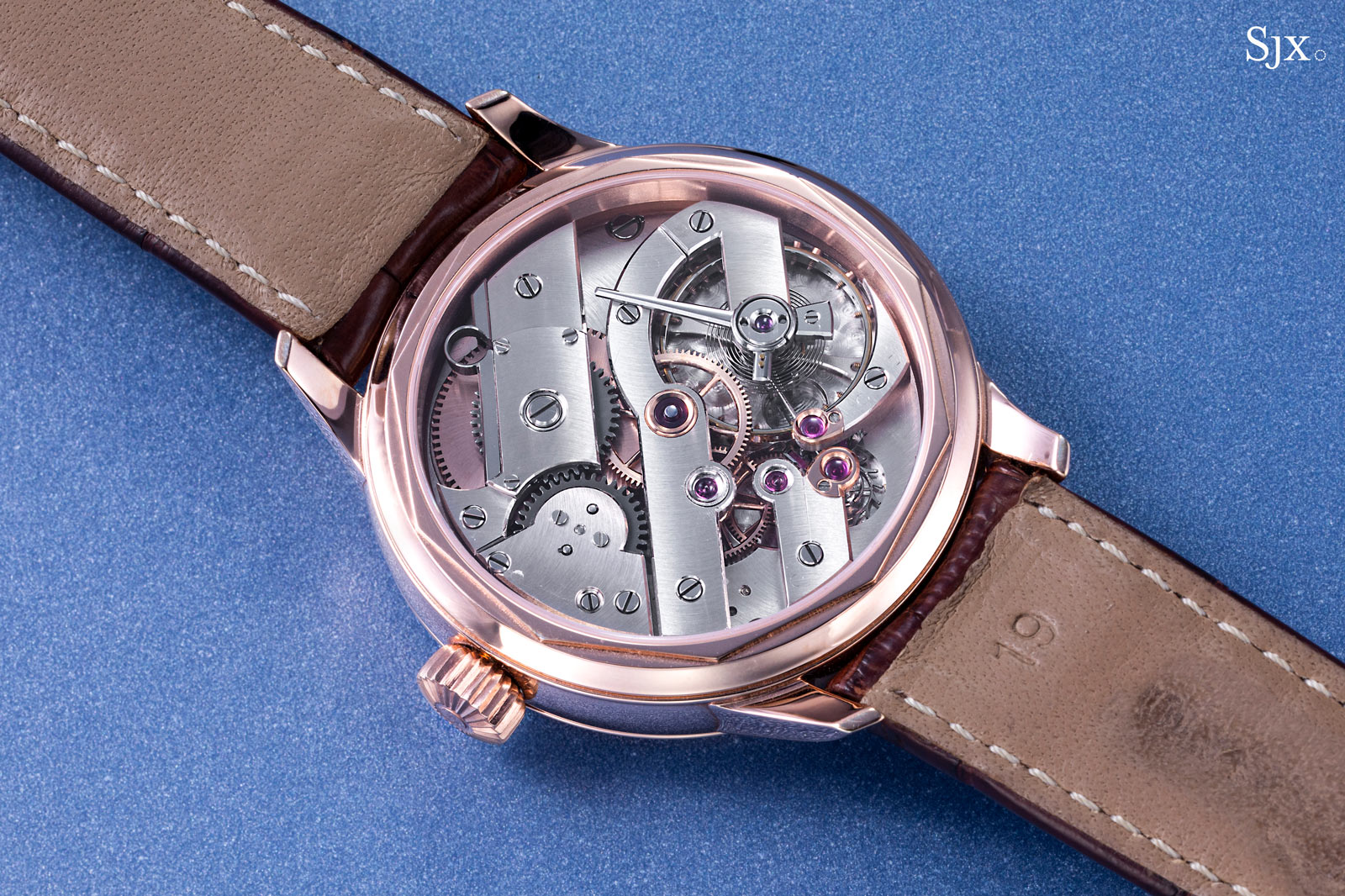
The movement of the Yosuke Sekiguchi Primevere
A world away from Switzerland, a tourbillon emerged from a newly-established watchmaking school. The ASEAN Lotus Tourbillon was created by Prince Horology, a horological academy located in the Cambodian capital.
Conceived by the team leading the school and produced with some help from its students, the Lotus Tourbillon is powered by a proprietary movement with a one-minute tourbillon. Although it is muted design-wise, the movement decoration is surprising, with some components verging on the exceptional. Besides the black-polished steel bridge and cage for the tourbillon, even the teeth of the barrel ratchet are individually polished.
Though the initial run of watches were gifts for world leaders who attended the ASEAN Summit in Phnom Penh, the school has indicated a variant of the watch will subsequently be sold to raise funds for the institution.
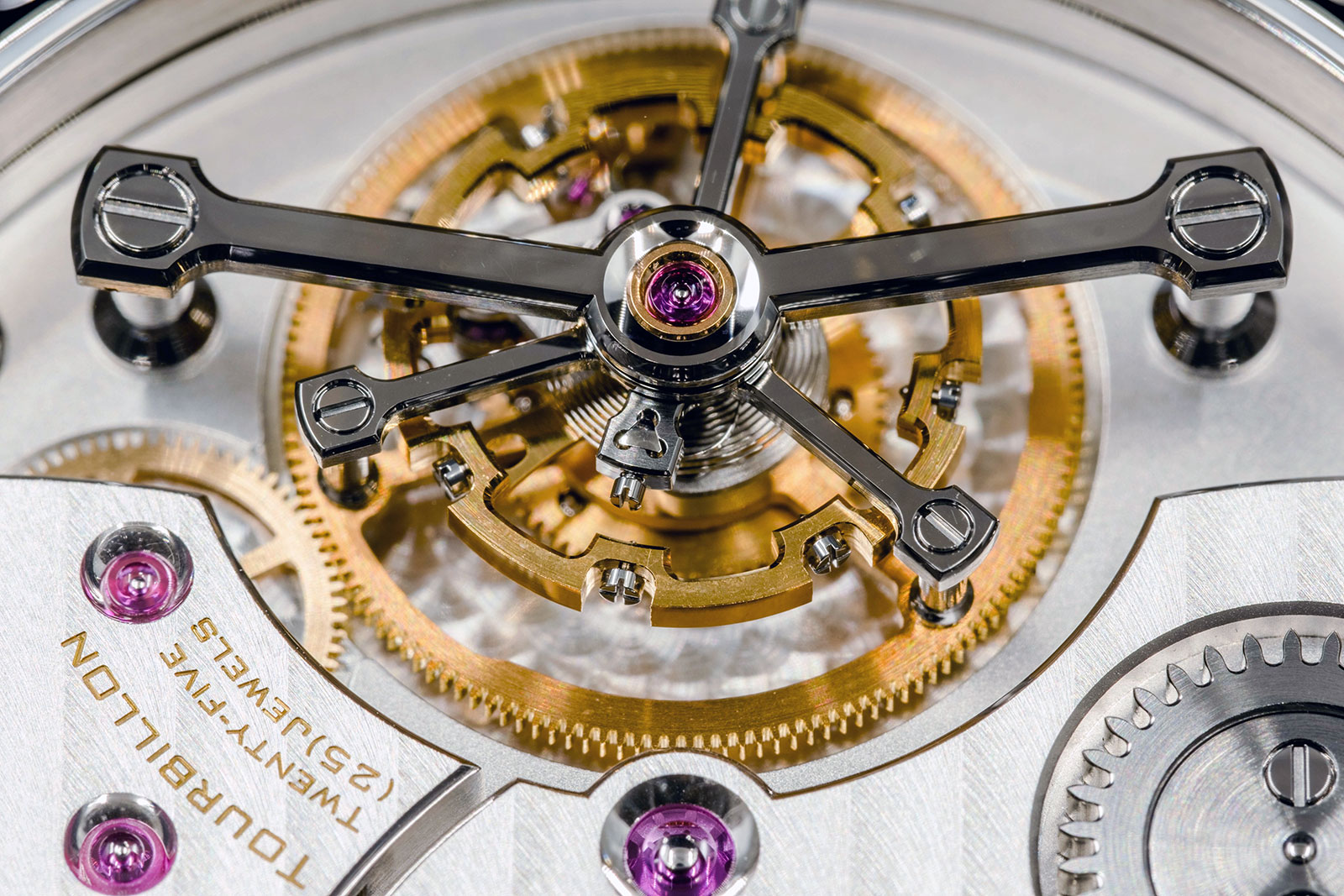
A closeup of the tourbillon. Image – Prince Horology
Also a tourbillon but one on another level altogether is the Greubel Forsey Tourbillon 24 Secondes Architecture. The Architecture embodies the brand’s evolved house style that is largely centred on streamlined sports watches and features a streamlined, water-resistant case.
Mechanically, it is fundamentally another version of the brand’s longstanding inclined tourbillon movement. But it reimagines the aesthetics of the calibre by rearranging the layout and further open-working the movement. Most importantly, the redesigned movement incorporates arched bridges in polished titanium.
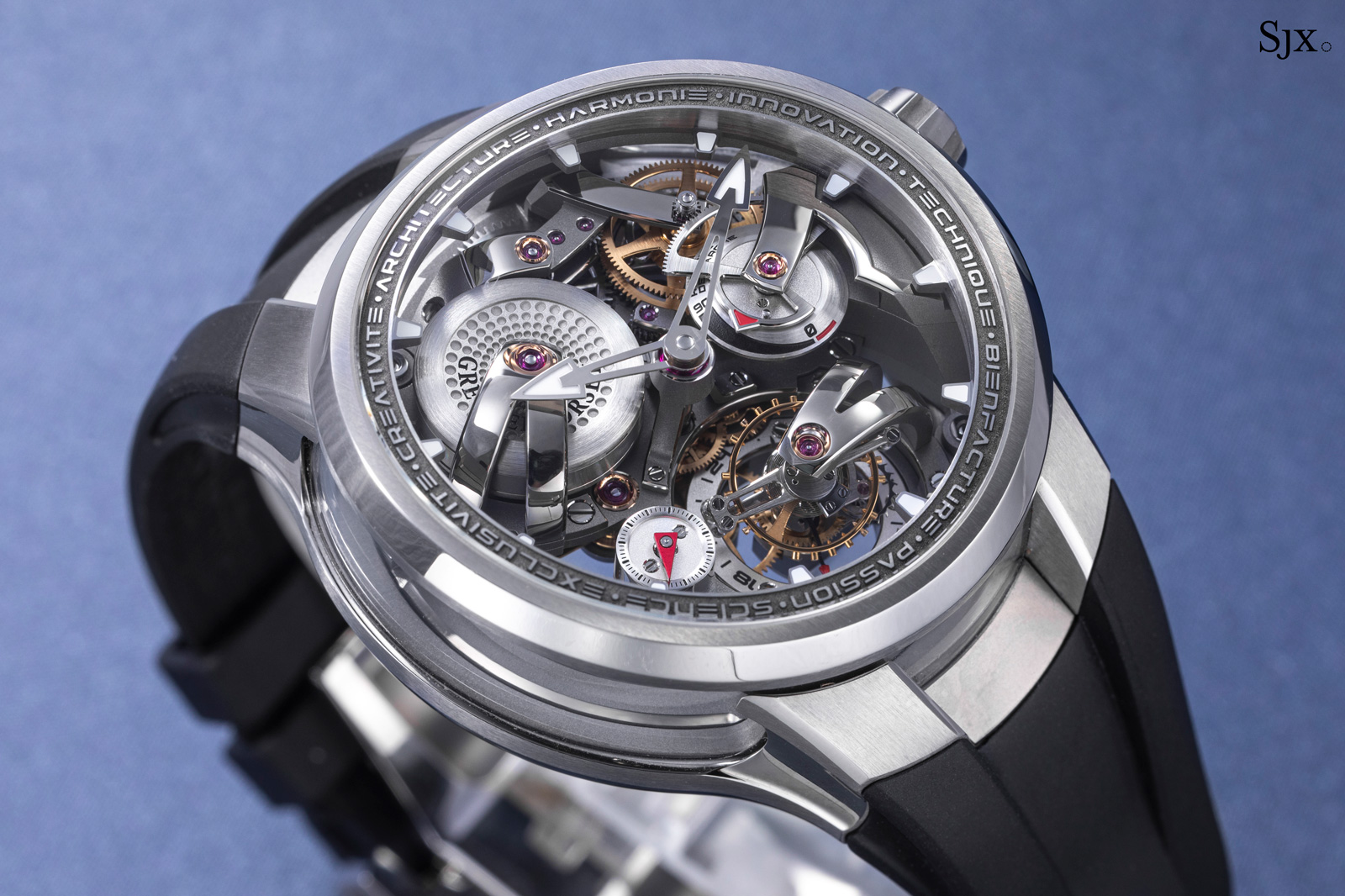
For sheer visual impact, the Nocturne has to be mentioned. It is quintessential Sarpaneva in both style and complication. With a Gothic motif done by a Finnish artist, the Nocturne incorporates Sarpaneva’s signature moon phase display with an oversized face that looms over the dial.
Like its earlier Moomin editions, the Nocturne makes liberal use of Super-Luminova – all applied by hand – to create a striking glow-in-the-dark landscape. At €19,000 it is amongst the priciest of Sarpaneva’s offerings, but the dial is decorated and finished by hand while the elaborately formed case is made in-house, rationalising much of the price.
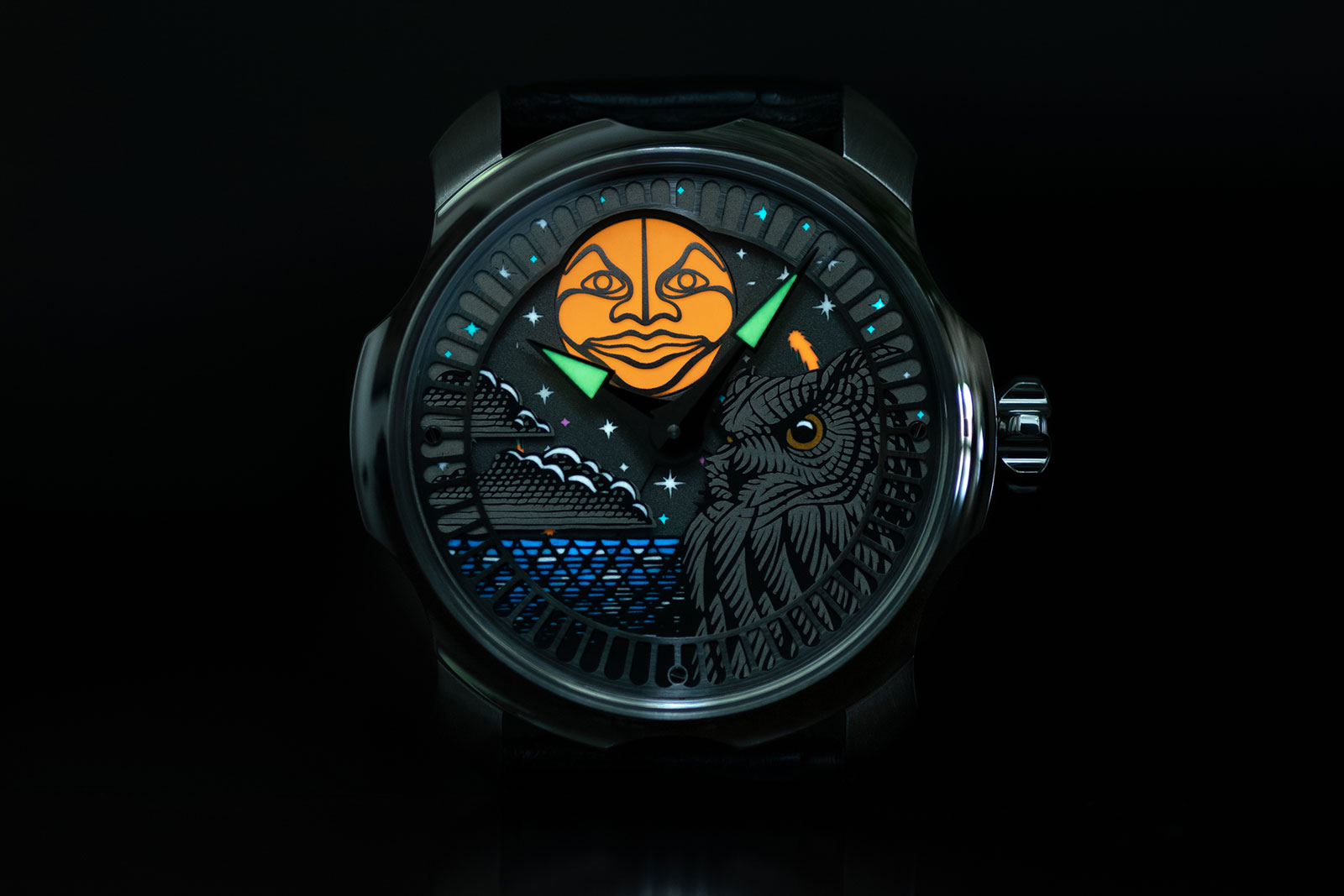
The Nocturne. Image – Sarpaneva
The first chronograph from MB&F, the Legacy Machine Sequential EVO continues the brand’s partnership with Belfast-based watchmaker Stephen McDonnell. As with their previous collaborations, the Sequential EVO is centred on Mr McDonnell’s creative approach to movement construction and retains the trademark feature of an oversized balance wheel on the open-worked dial.
Appearing to be extraordinarily complex thanks to the dense mass of chronograph levers and wheels on the dial, the Sequential EVO is an innovation approach to the chronograph but conceptually straightforward: it incorporates twin chronograph mechanisms linked by an inverter mechanism allowing the wearer to operate each chronograph independently as well as switch instantaneously between the two. And it is priced at US$180,000, making it pricier than the A. Lange & Söhne Triple Split, which is less imaginative in concept but arguably more complex mechanically.
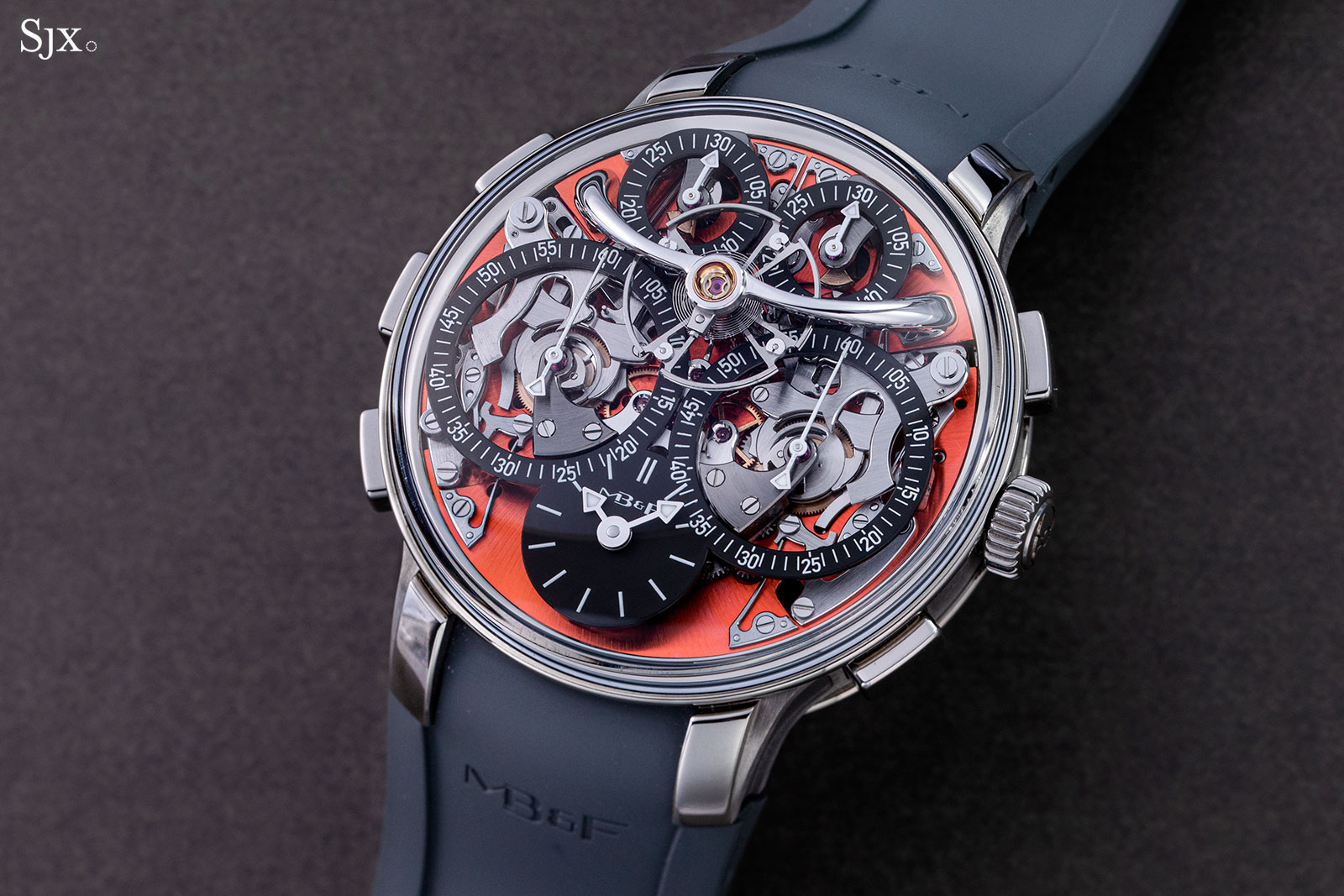
Visible on the dial of the Sequential EVO, the twin chronograph mechanisms mirror each other
Perhaps more impressive than any of the wristwatches here is the desk clock from Russian watchmaker Konstantin Chaykin. Resembling a fancy cake, the Lucomorye Clock is actually a grand complication made of silver, aluminium, jade, opals, and lots of enamel.
Inspired by an Alexander Pushkin poem, the Lucomorye is powered by a movement comprising 1,119 parts, entirely invented by Mr Chaykin. The fairytale exterior, on the other hand, is the work of a noted Russian jeweller.
Most ingenious is the patented hour display that relies on a tiny chain that wraps around a drum to form a Roman numeral. This requires each hour to have its own set of cams, which in turn control the motion of the carriage that moves the chain into the right position.
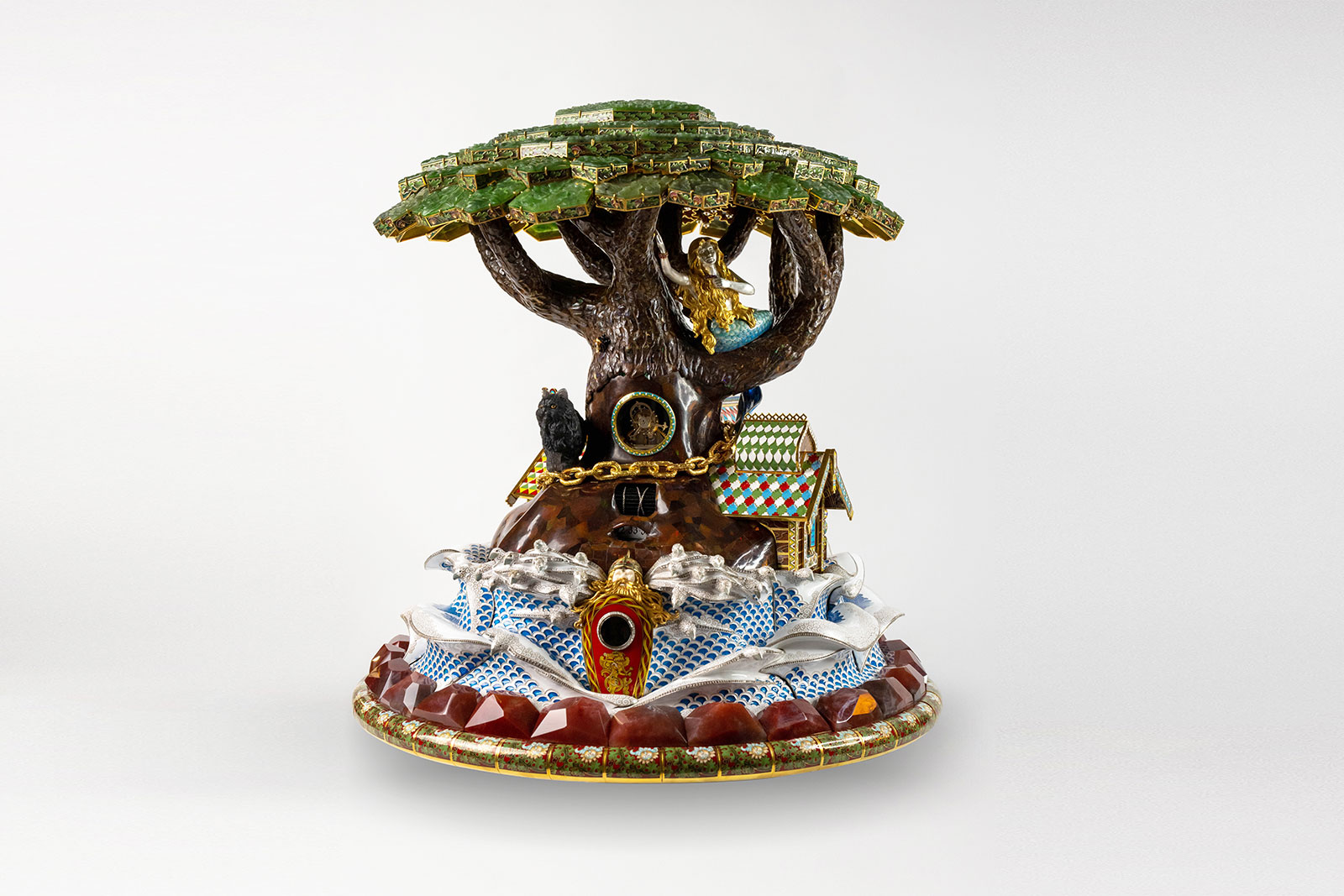
The Lucomorye Clock. Image – Konstantin Chaykin
And now for some honourable mentions. A unique collaboration between two British brands, the Fears Garrick combines the retro, minimalist aesthetic of Fears with the mechanics of Garrick (which are in turn supplied by Swiss independent watchmaker Andreas Strehler). While not revolutionary in design, the Fears Garrick has an appealing styling that is simple yet distinctive.
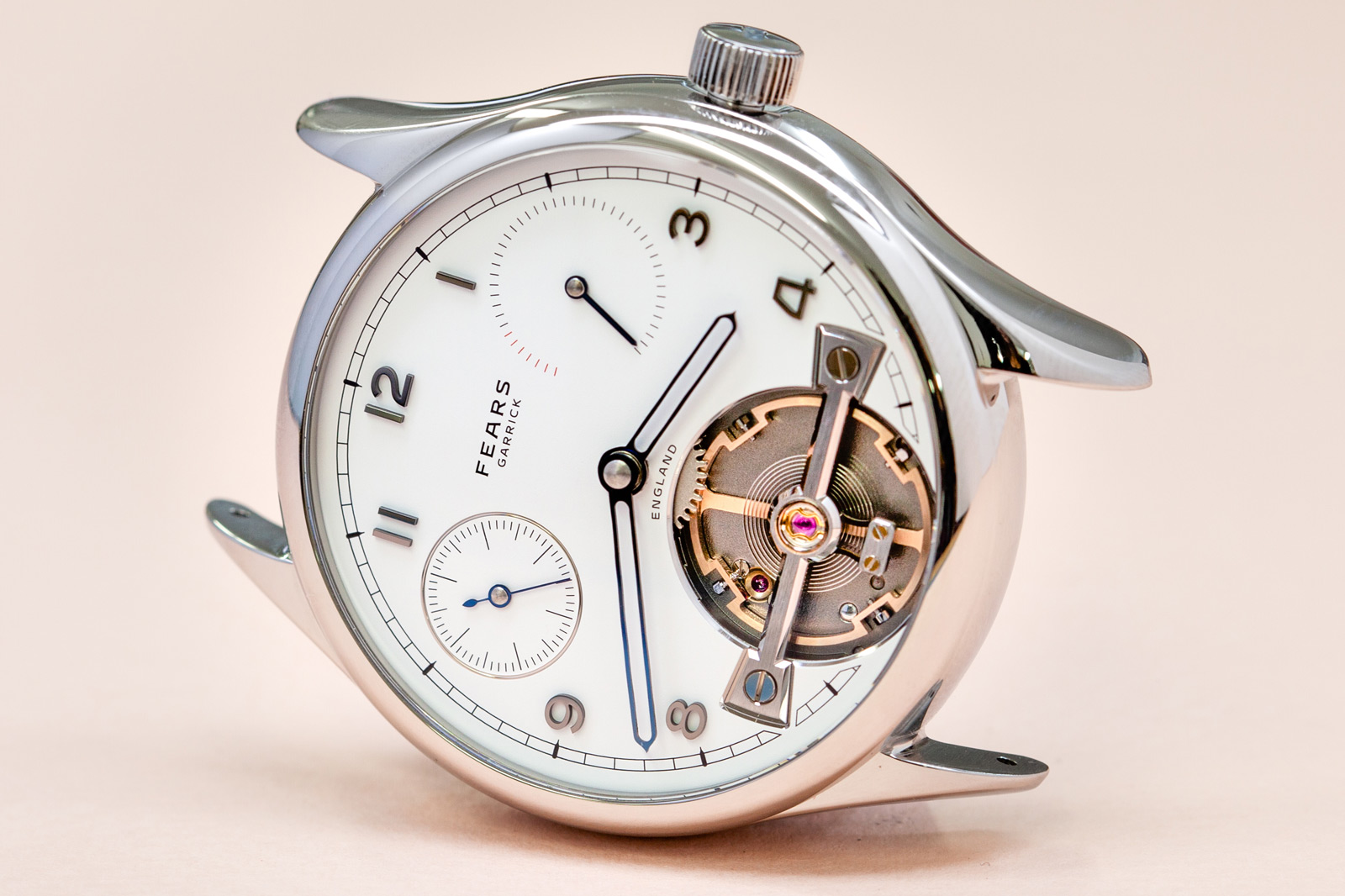
The Fears Garrick. Image – Garrick
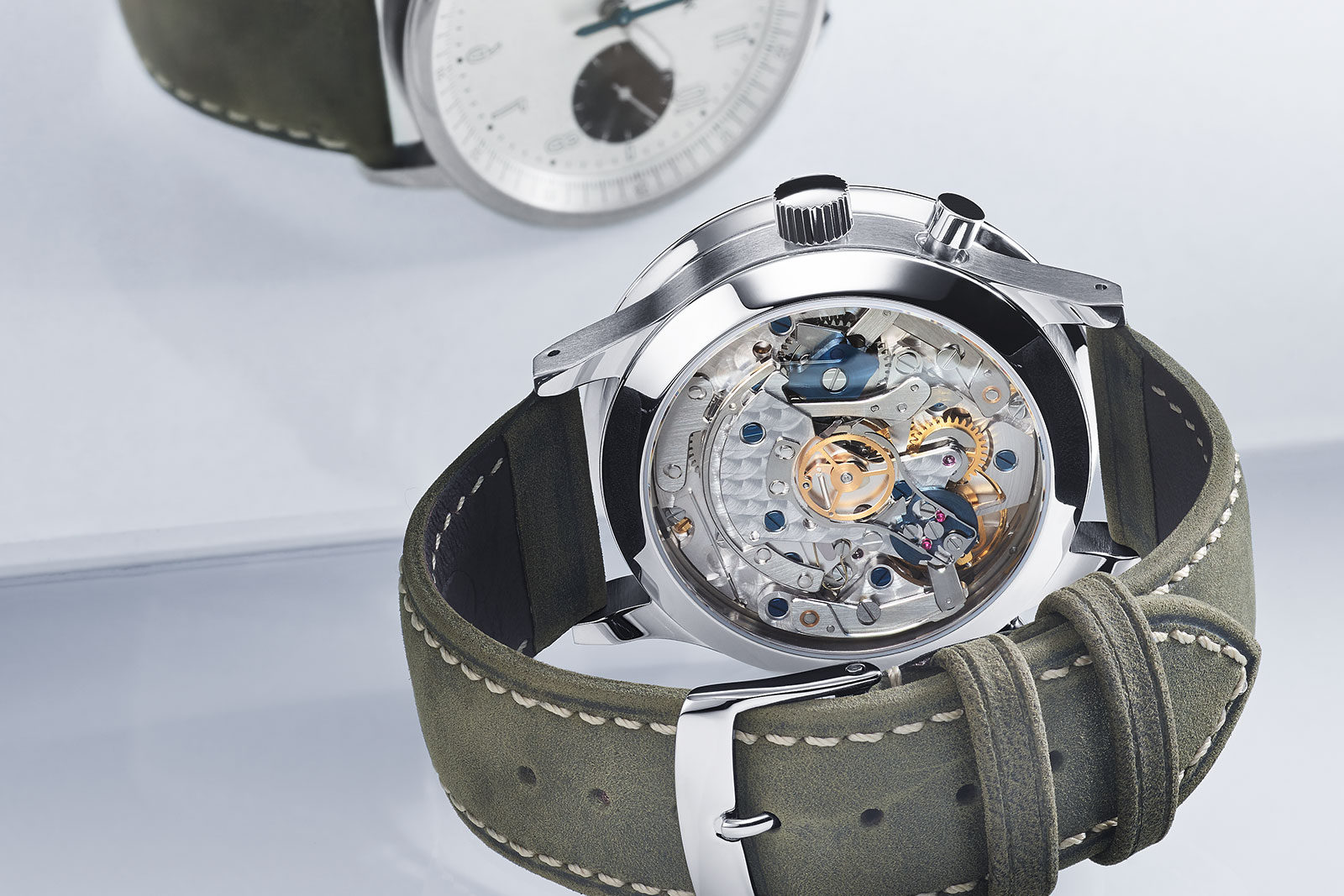
The movement of the Habring2 Doppel 38. Image – Habring2
And for sheer value, the Habring² Doppel 38 is a winner. It’s essentially a smaller version of the brand’s split-seconds chronograph so it offers nothing substantially new, but it is certainly one of the best value propositions in the realm of affordable chronographs. The 38 mm case means it is more wearable and definitely more elegant, while retaining the same proprietary A11 hand-wind movement developed by Habring².
Back to top.

